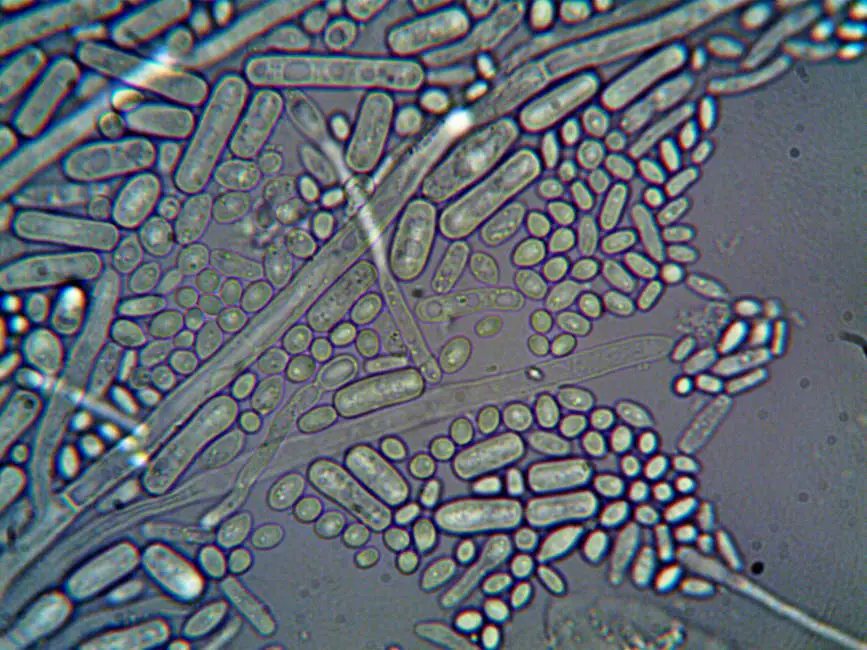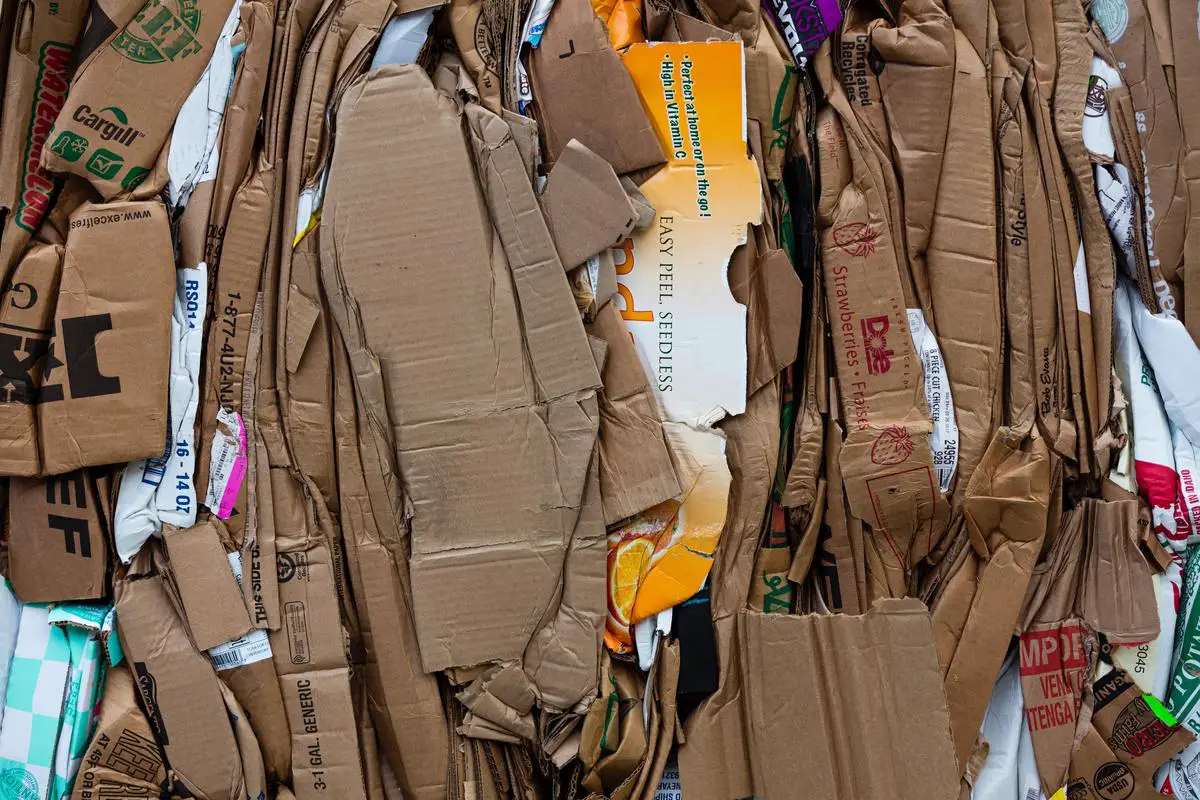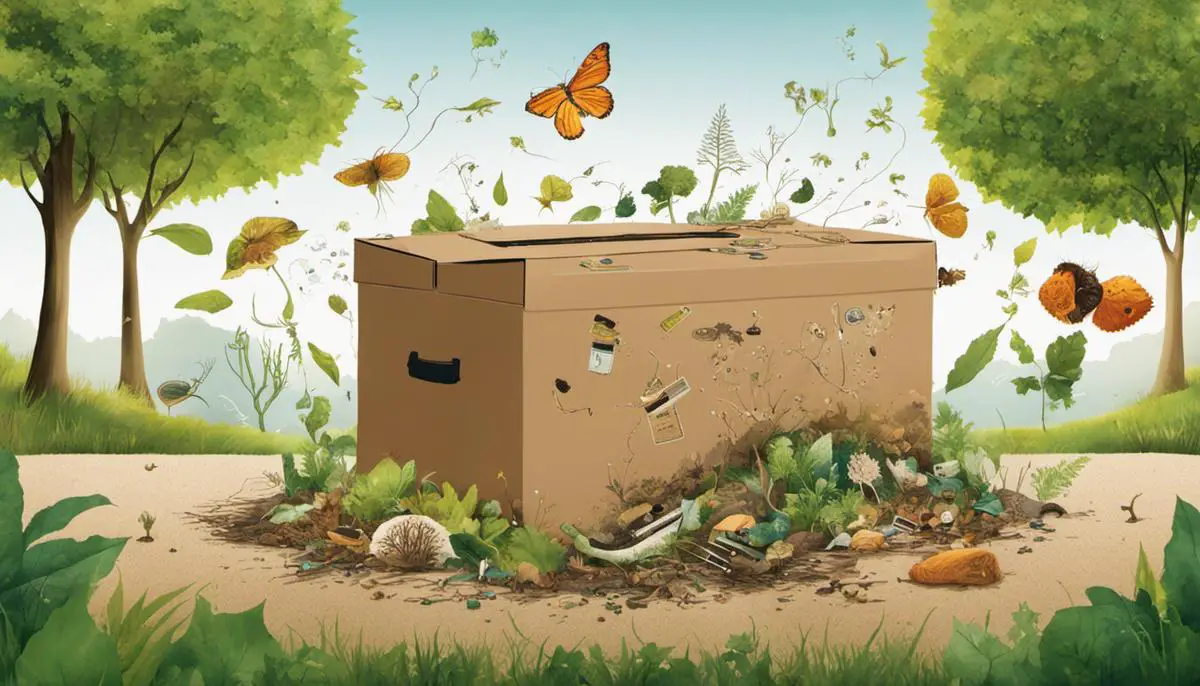Decomposition is an essential and intricate process that transforms waste materials into useful, environmentally-friendly compounds. Among the many materials subject to decomposition, cardboard serves as a primary example. It plays a central role in worldwide consumption and waste production, making its breakdown a critical aspect for environmental sustainability. This discourse delves into the fascinating realm of decomposition, especially its work on cardboard. It explores the science behind this process, factors influencing it, and the implications of cardboard decomposition on our environment and society. By exploring these topics, we aim to enhance readers’ understanding of the decomposition process, offer insights into its impact on cardboard, and highlight its environmental significance.
What is Decomposition and how it affects Cardboard?
Understanding Decomposition
Decomposition is a natural process that involves the breakdown of organic materials into simpler matter. It typically involves biochemical reactions and is facilitated by microorganisms such as bacteria and fungi involved in biological waste management. These microbes consume the organic material, breaking it down into simpler compounds like carbon dioxide, water, and nutrient-rich organic matter.
Reader Poll: What online courses would interest you?
The Role of Microorganisms in Decomposition
Microorganisms play a crucial role in the decomposition process. For instance, bacteria and fungi can break down complex organic compounds such as cellulose and lignin, which are major components of cardboard. These microorganisms produce enzymes that break the bonds holding together the larger molecules in these complex compounds to produce simpler compounds.
The level of microorganism activity within decomposition is influenced by environmental conditions. Moisture, for example, is key for microbial activity, and so decomposition tends to be faster in wet conditions. Similarly, temperature also influences microbial activity: decomposition is generally quicker in warmer conditions and slower in colder ones, as most microorganisms thrive in moderate to warm temperatures.
Decomposition of Cardboard
Cardboard, being organic matter primarily composed of cellulose fibers derived from tree pulp, is fully biodegradable. When cardboard waste is discarded, microbes in the soil or compost heap begin to consume the cellulose fibers, breaking them down into their simpler compounds.
Subscribe to our newsletter!
However, the time it takes for cardboard to decompose can vary widely depending on the specific conditions in which it’s disposed. If the cardboard is composted in a controlled environment with optimal conditions such as high temperatures, consistent moisture, and a well-diversified community of decomposing microbes, decomposition can take as little as three months.
Alternatively, if the cardboard is discarded in a landfill, where conditions are far from optimal due to the lack of oxygen, limited microbial activity, and varying moisture levels, decomposition can take much longer. It’s not unusual for cardboard waste in landfills to remain largely intact for several years.
Understanding the Influences on Cardboard Decomposition
The period required for cardboard to decompose can be influenced by several key factors. For example, the decomposition rate is often dependent upon the thickness of the cardboard. More specifically, thicker or multi-layered varieties of cardboard tend to decompose at a slower pace than their thinner counterparts.
Additionally, the presence of contaminants like adhesives, laminates, dyes, inks, or non-biodegradable components can hinder the decomposition process. They may either provide a barrier, making the material less accessible to microbes, or introduce substances that are toxic to these organisms.
Even though cardboard is biodegradable, it is also recyclable. The act of recycling cardboard conserves energy and lessens the necessity for tree felling, which in turn contributes to new cardboard production, thereby adding a conservation element to responsible waste management.

Factors Influencing Cardboard Decomposition
Digging Deeper into Decomposition Basics
Decomposition is essentially nature’s recycling system, wherein organic materials are gradually broken down into simpler forms. This process can vary enormously depending on numerous influencing factors, with bacteria and other microorganisms acting as the primary agents of decomposition. These life forms excel in breaking down complex organic structures, turning them into simpler forms, and thereby returning vital nutrients to the environment.
Cardboard Decomposition: The Process
Cardboard is an organic material made primarily from tree pulp. Due to its composition, it is biodegradable and will decompose over time when exposed to the right conditions. The decomposition process begins when the cardboard comes into contact with water and bacteria. The bacteria thrives in the wet environment, begins to eat away at the fibers of the cardboard, and gradually breaks it down.
Influence of Sunlight Exposure
The rate at which cardboard decomposites can be influenced by the amount of sunlight it is exposed to. This is because sunlight can help to speed up the decomposition process. The UV rays from sunlight can break down the chemical bonds in the cardboard, which allows the bacteria and other microorganisms to consume the material faster. In direct sunlight, it might take three months for cardboard to decompose.
Impact of Humidity Levels
Another key factor that impacts how quickly cardboard decomposes is the level of humidity in the environment. Higher humidity can speed up the decomposition process. This is due to the moisture in the air, which makes the cardboard more susceptible to bacterial breakdown. If the cardboard is consistently exposed to a high-humidity environment, it can decompose in as little as two months.
The Role of Soil Quality
The quality of the soil in which cardboard is placed to decompose also plays a significant role in the speed of its breakdown. Rich, fertile soil contains a larger quantity and diversity of microorganisms which can help to decompose the cardboard faster. When buried in high-quality soil, cardboard may decompose within a month.
Presence of Microorganisms
As mentioned earlier, bacteria and other microorganisms play a crucial role in the decomposition of cardboard. Some bacteria are more effective at decomposing organic matter than others. Therefore, the specific types and quantities of bacteria present can greatly impact the decomposition process. If there are large amounts of the most effective bacteria present, cardboard can begin to decompose within two weeks.
Cardboard, a material celebrated for its eco-friendly attributes, is able to decompose and return its nutrients back to the earth within a variable timeframe. Depending on environmental conditions, this decomposition process can happen quite rapidly in just a few weeks, or it could extend to a duration of several months.

Photo by thejmoore on Unsplash
Cardboard Decomposition: Timeline and Environmental Impact
Understanding the Decomposition of Cardboard
The timeframe for cardboard decomposition is closely linked to the specific conditions it’s subjected to. In ideal settings, where the environment is damp, warm, and rich in bacteria, the decomposition process can commence in as little as three months. On the contrary, when the cardboard is placed in less ideal conditions like a landfill, where exposure to natural elements and bacteria is greatly reduced due to compacting and capping of waste, the decomposition could take much longer – up to two years.
Environmental Impact of Cardboard Decomposition
When cardboard decomposes, it breaks down into organic matter which can be used to enrich soil, contributing to the growth of plants and crops. Keeping cardboard out of landfill sites allows for better use of the space and reduces the pressure on land resources. As landfills reach capacity, waste has to be transported to new sites, increasing carbon emissions.
Recyclability of Cardboard
One of the main benefits of cardboard is its capacity to be recycled. The recycling process is generally faster than natural decomposition, with used cardboard able to be transformed into new materials within a few weeks. The fiber content in the cardboard makes it possible to recycle it about 7 times before the fibers become too short for new cardboard production.
Comparison of Cardboard With Different Materials
Compared with other materials, cardboard has a shorter decomposition time. Most plastics take several hundreds of years to decompose, and glass and aluminum cans can take even longer. Furthermore, the recycling process is more efficient for cardboard compared to these other materials.
Cardboard’s Impacts on Landfill Overflow
While the decomposition of cardboard is far quicker than many other materials, its presence in landfills can still contribute to overflow, particularly due to the bulking nature of cardboard products. If not compacted efficiently, they can take up unnecessary space. However, with proper waste management policies that encourage the separation and recycling of cardboard, the issue can be alleviated. The volume of cardboard in landfills can be reduced dramatically, thus delaying the time when these sites will become filled to capacity.
The Sustainability of Using Cardboard
The use of cardboard has clear environmental benefits. As it originates from renewable resources (trees), the production of cardboard has a lower carbon footprint compared to many other materials. Furthermore, as mentioned earlier, cardboard decomposes significantly faster than plastic or glass and can be efficiently recycled. Hence, it is a more sustainable choice.

By examining the process of decomposition in the context of cardboard, we’ve journeyed through the science behind nature’s recycling process, articulated the conditions that speed up or slow down decomposition, and touched upon practical applications concerning waste management and environmental preservation. Understanding the timeline of cardboard decomposition doesn’t just benefit our individual efforts in recycling initiatives, but also contributes to a broader perspective on environmental conservation. As our consumption patterns continue to evolve, so should our knowledge and actions reduce negative environmental impacts. Let our exploration serve as a stepping stone for more informed actions that preserve our planet for generations to come.

